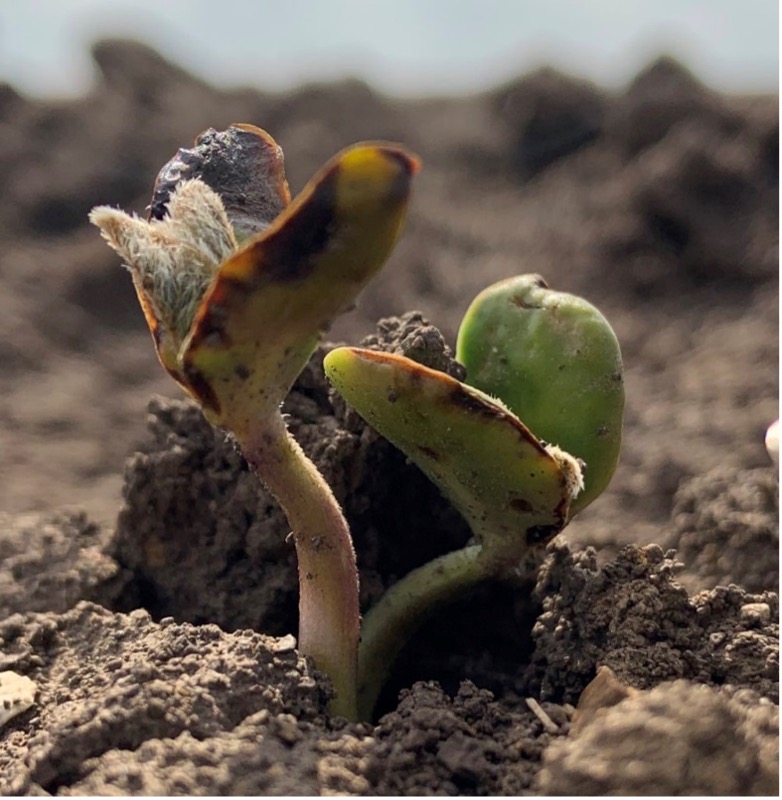Hello again, it’s Max the soybean. If you remember, my siblings and I were planted on March 10 and had come through some pretty harsh conditions. Last time we spoke, there was some doubt as to whether or not we would survive the hard freeze we had just been through where the temperature dropped as low as 26°F over the previous couple of nights. As you can see in this picture, we were plenty cold and covered with ice crystals.

The next few days were pretty dicey. None of us came through unscathed. For most of us, our cotyledons bore the brunt of the damage. However, we still had living tissue at a node and slowly started to recover. In fact, despite having been thoroughly frozen and covered with frost, about 75 percent of the plants that had emerged ultimately survived. If you take a close look at this photo, you can see that there was severe damage to much of my tissue, but since the growing points contained in the nodes survived, I was able to pull through and am happy to report that I am once again healthy and strong.

It was pretty cold off and on for the first month of my life above ground, but gradually it has started to warm up. I was happy for the warmer weather and started to grow rapidly, adding another node about every four days. As you know, node count is the factor that is most strongly correlated to higher yield, which is the driving factor behind all the hype about planting us early. The earlier we germinate, the more nodes we create throughout the growing season. However, the warmer weather brought along a new challenge.
As the soil temperature gradually began to climb, dormant weed seeds began to germinate. According to this article from Iowa State University, the critical period at which weeds have the most detrimental impact on the crop is at the V1 stage for soybeans planted into 30-inch rows, as I was. This means that it is important to control weeds very early in the growing season. Fortunately for me, I was planted into a field in which a strong herbicide regimen was used, beginning with a clean field. An effective pre-plant herbicide was applied. This was followed by a post-emergence application which included another residual product, even though many weeds had not emerged and those that had were small. They tell me that the easiest time to control weeds is before they germinate, and boy do I ever hate weeds. One catchy phrase that I have overheard is “Start Clean, Spray Clean, Stay Clean,” meaning that growers shouldn’t be afraid to apply their post-emergence herbicide applications onto fields with few apparent weeds as long as they use a strong residual product.
Well, I’ll get off my weed soapbox, it’s just that this is a topic that we soybeans are passionate about. Weed competition can really stress us out, and our yields can be reduced by almost 40 percent or even more in weedy fields. I’m happy to report that the recent rains have quenched my thirst and boosted my mood, and I am looking forward to my rapidly approaching fungicide application. Stay safe out there.
To be continued…


 and then
and then